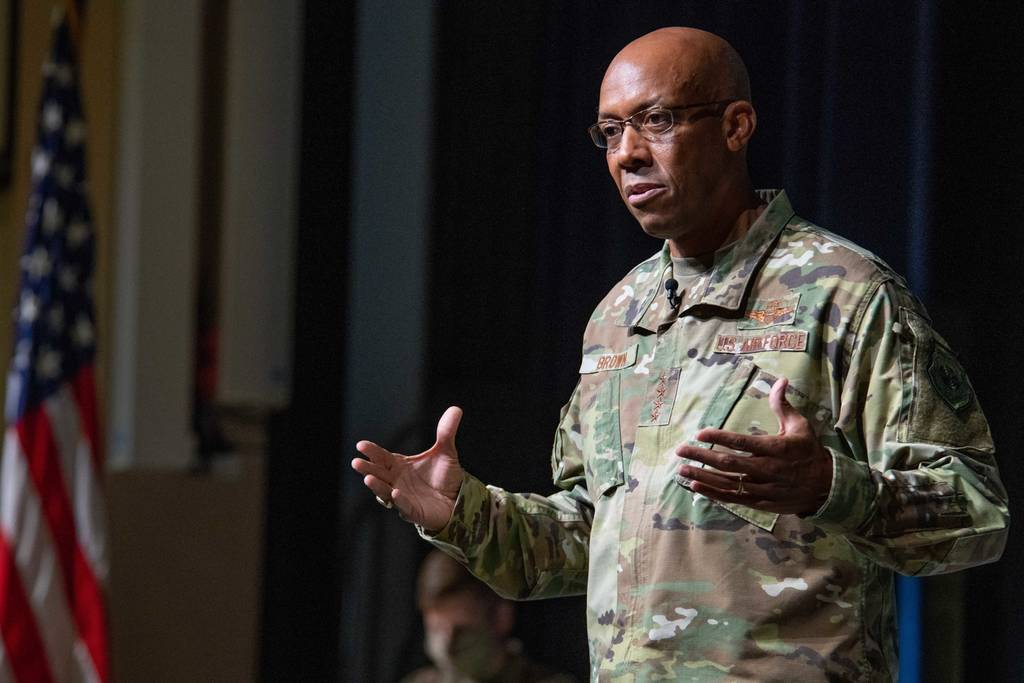WASHINGTON — The Air Force is looking into flipping the cost curve when it comes to defeating adversaries by focusing on electronic or nonkinetic capabilities as opposed to missiles.
“In some aspects, an electron is much cheaper than a very expensive missile,” Gen. Charles Brown, chief of staff of the Air Force, said during a Jan. 27 web event hosted by the Association of Old Crows. “We’ve got to think about the cost curve” and be able to do both the kinetic and nonkinetic.
Brown acknowledged that the Air Force has been “asleep at the wheel” for the last 25 to 30 years when it comes to operations in the electromagnetic spectrum.
Sophisticated adversaries have noted the spectrum is critical for U.S. forces and have sought high-tech methods to deny it, trying to jam or spoof communications.
Top nation-states, including China and Russia, have demonstrated significant prowess within the electromagnetic spectrum, rivaling the DoD in some respects, while U.S. forces divested much of their related systems and expertise following the conclusion of the Cold War.
In some cases, operating in the electromagnetic spectrum can be cheaper than other options, Brown said. As the Air Force looks toward future budgets and ways to not only achieve cost savings but stay ahead of adversaries, adapting software-defined systems could be a huge boon.
The military can rapidly updated those systems to keep pace with fast-moving threats without fundamentally changing the platform, capability or maybe most importantly, the budget.
While the Air Force has taken some recent steps to improve its approach in the electromagnetic spectrum, Brown said they aren’t enough.
These include creating a new directorate within the plans and strategy office on the Air Staff, as well a forthcoming spectrum warfare wing that will focus on digital engineering that allows faster execution in the domain.
The Air Force is also undertaking war games to help project future needs. Brown contrasted these with exercises, which use existing capabilities. The war games are more tabletop activities that invite a wide range of stakeholders from inside and outside the Air Force to grapple with what’s possible.
Bringing in people from industry or think tanks will provide perspectives and ideas that the Air Force might never have thought of, Brown said. This allows them to look at concepts that could be developed in the future.
When it comes to cross-service cooperation, Brown mentioned that his service is working with the Navy to look at electromagnetic attack waveforms and how they can attack communications or intelligence systems of adversaries.
Mark Pomerleau is a reporter for C4ISRNET, covering information warfare and cyberspace.








